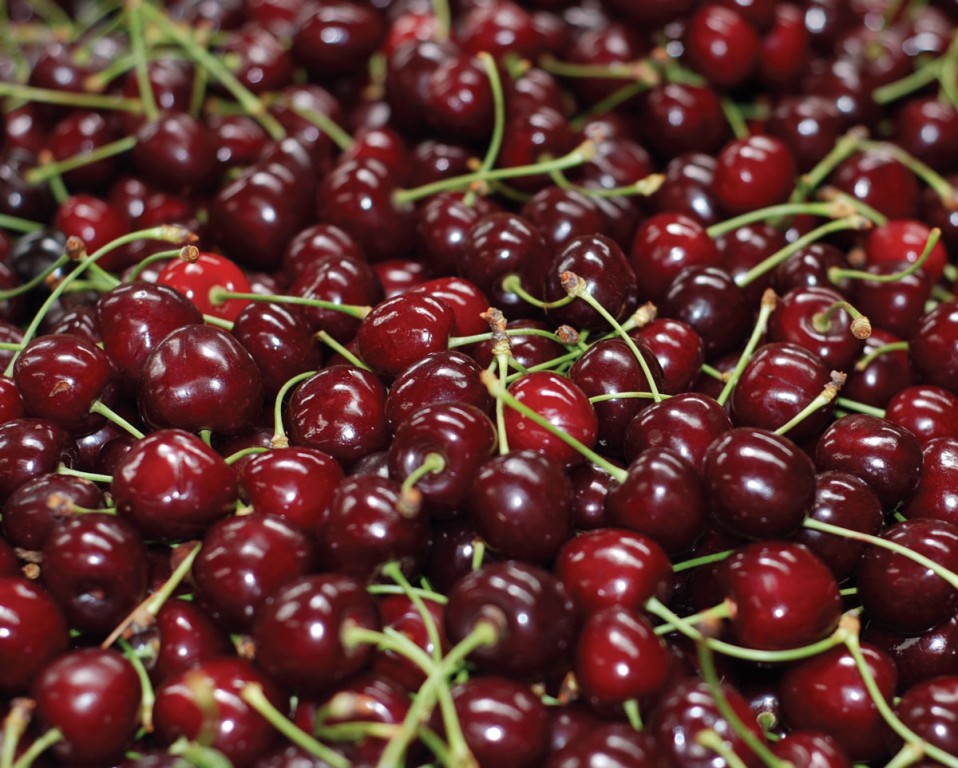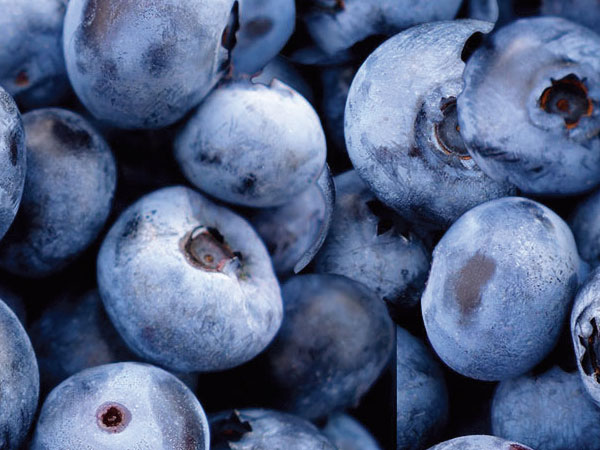Latin America’s exports of fruits have been tested by two seasons under the cloud of the COVID-19 pandemic.
During Lunar New Year, Chinese families love to give — and receive — gifts of fresh cherries. That’s been a huge bonanza for Chile. Demand has proved so high that more than 90% of Chilean cherries produced are now exported to China, an almost $2 billion market that has multiplied severalfold over the past decade. The first batches each year command such premium prices that they are airfreighted from Santiago to Shanghai and Guangzhou to insure earliest delivery of the prized produce.

That trade has been sorely tested by two seasons of being under a pandemic cloud. First, in late January 2020, China abruptly shut down its ports just as the last boatloads of cherries were arriving. This caused a two-week chokehold on delivery and subsequent fall in prices once the cherries reached land. In addition, the Chinese ports closure triggered a cascading shortage of reefer containers throughout Latin America, which took weeks to recover.
Then, in late January this year, a false rumor spread on Chinese social media that a box of imported cherries in Jiangsu province, near Shanghai, was contaminated with traces of Covid-19 through packaging. This triggered an immediate, although brief, plunge in the wholesale and retail price of cherries in China. (One Shanghai-based Chilean marketing executive called it a “bucket of cold water,” according to the media site Diálogo Chino.)
Chilean producers and officials immediately launched a million-dollar marketing and PR blitz, and were able to successfully counter the rumors, which generated more than 400 million page views and 25,000 articles, according to Gonzalo Salinas, a partner and market analyst at iQonsulting, a Santiago-based consultancy that specializes in agriculture.
The Chilean cherry business didn’t escape wholly unscathed. There was some spoilage in the aftermath of the port shutdown and those cherries that did make it, delayed to market, fetched less money, especially since there was a lockdown at the time. IQonsulting estimated Chile could have lost as much as $200 million due to this initial fallout of the pandemic.
Probably less severe, but still noteworthy, was the impact of the rumors of tainted cherries.
This past season, which extended from October through March, total cherry production increased a whopping 54% in volume, according to statistics culled by iQonsulting, which has just released its annual survey of the cherry trade in South America. Final dollar figures aren’t yet available, but as of the end of February, FOB totals stood at $1.85 billion, already a $300 million increase over 2019-2020 turnover, which itself was about $250 million more than 2018-2019. (Turnover has increased three times over the past five years.)
“From the field to the packinghouse to the port and then to the final destination, in a year of the pandemic, with lockdowns and all the menace from COVID, I think it’s absolutely remarkable,” said Salinas. “I’m impressed, but also pleased at how it all went, having to bear a 54% increase in the production.”

Fruit Exports Response
The minimal damage from both crises and the aggressive response to them have been mirrored across the region in its handling of fresh produce exports, which in Latin America outside of Mexico are largely fruits, during the pandemic. This demonstrates just how vital fruits have become as an export center, not just to Chile, but for several other countries across Latin America.
That importance is matched by a steadily growing trade and operations competence. Local producers, shippers, the ports and logistics specialists all responded admirably to COVID-19 related stresses because they have the necessary experience to weather such stresses.
“This is professional commercial agriculture operating at a very high level, and at that level, you can see the efficiency and the strong business-oriented approach to the agriculture kicking in with this crisis,” said Penny Bamber, an international trade specialist with a focus on global value chains. She is based in Santiago, Chile. “These are very sophisticated companies.”
It may have been a rocky start, but most fruit export operations recovered quickly, many in a matter of a few weeks. Just as America’s food supply chain held strong throughout the pandemic, so, too, did this export trade.
“It was a short-lived shock on this side of the world,” said Bamber. “They were much less affected than other producing regions in the world.”
There are several reasons why: Many of the exporters are vertically integrated and own the farms and packing plants as well. They have strong commercial networks that are highly diversified geographically. Their personnel are experienced. Their operations, and those of their logistics partners, are sophisticated, with state-of-the art cold-chain and packaging technology developed over the past two decades. And, Bamber added, “they have a good product to start with.”
The governments will pull out the stops to support these industries because they are so critical to economic wellbeing. Chile, for example, treats this agriculture as an essential industry. The authorities moved quickly to digital certification.

Fresh Fruits Big Business
Fresh fruit exports have become big business for many Latin American countries. These increasingly extend beyond the traditional tropical plantation crops of bananas and pineapples, which are still considered commodities, with extremely low margins and bulk carrier shipping. Value-added fruits such as cherries and blueberries are gaining acreage at a rapid clip. For example, some Chilean analysts believe the acreage devoted to cherries in Chile will increase by about a third in the next several years, with an emphasis on premium varieties.
“The planting rate [of new cherry trees] is very, very fast, and the number of plants sold every year is massive,” said Salinas.
Even traditionally less value-added fruits such as table grapes are moving up the value chain, with an emphasis on pricier varieties. “We have been seeing this shift towards quality, not only in fruit species, but also in varieties,” said Salinas. “We have seen this shift in blueberries and sweet cherries, the most representative examples of high-value fruits, but also in the most common ones, which are table grapes, apples and also kiwifruit.”
Quality control, from picking and processing to packing and climate-controlled transport, becomes much more important.
According to a UN study in 2018, Latin American fruits and vegetables exports tipped $30 billion in 2017. Mexico still heads the field, with about half the total, but the rest of the region is coming on strong, and, in some crops, like cherries, blueberries and grapes, dominates. Approximately 86% of EU pineapple imports are sourced from Costa Rica, for example, and some 70% of EU banana imports from Ecuador, Colombia and Costa Rica combined.
Latin America has developed into the world’s fruit bowl, growing and exporting both tropical and temperate varieties. With growing seasons that often counter those in the Northern Hemisphere, they insure year-round supply. In terms of fruit exports, Chile leads the pack outside Mexico, with annual revenues now at about $7 billion. Fresh fruit ranks as Chile’s second largest export category, as it does in Peru and Costa Rica.
Destinations are increasingly diversified, and span the globe from the US to Europe to China. Exporters responded to COVID-related uncertainties with some quick adjustments, including the temporary diversion of produce in transit. While waiting for ports to clear or containers to reappear, because they could park the fruits in cold-storage warehouses, exporters could delay shipments if necessary, without damaging the goods. Even those already packed into reefer containers were stored safely either at the port in Valparaíso or at processing centers.
COVID Spurs New Initiatives
Covid has also spurred new initiatives. “We have to have active minds,” said Luis Oscar Muñoz, the president of the Costa Rican fruit exporting company TropiExports. “Everyone needs to help here and we want to be part of the solution, not part of the problem. We try to find markets for good production, for quality.”
Muñoz cited two new ventures. His company is negotiating to export Peruvian avocado pulp to China. And, he’s helping a partner in Costa Rica with new technology that, he says, enables fruit to be frozen without losing the taste and integrity that is the curse of frozen fruit today. “When we first met them, they were only thinking locally. Now, they’re thinking internationally.”
According to Salinas, Chilean cherry exports to countries other than China this past season increased 40% over a year earlier.
Because COVID-related lockdowns didn’t happen simultaneously across the globe, and because different fruit is exported at different times of the year, exporters got a breather after China. They were better prepared for the challenges that came from the US and Europe, and better able to cope. That included the quick shift in consumer eating habits, notably the collapse of restaurants and institutional dining and the heightened demands on supermarkets.
Fallout from COVID has helped boost demand for fresh fruits, part of a growing awareness into the need for a healthier diet. It’s also reordered priorities. The demand for fresh oranges, for example, has grown dramatically in certain countries such as Japan.
The heads-up from China also gave time for Latin American fruit producers and exporters, often one and the same, to initiate adequate safety measures and protocols for handling and packing before COVID struck the region.
The region’s ability to ship fruit safely around the world is a marvel of planning and execution.
Fruit exporters and their logistics partners over the years have devoted time and money into developing packaging and shipping technology that ensures quality and lengthens shelf life. Fruit must be packed to weather a voyage that now takes 22 or 23 days from, say, Valparaíso to Shanghai. That, in itself, is a marked improvement from about five years ago, when ships took 30 to 33 days to make the voyage.

Follow us on social media: